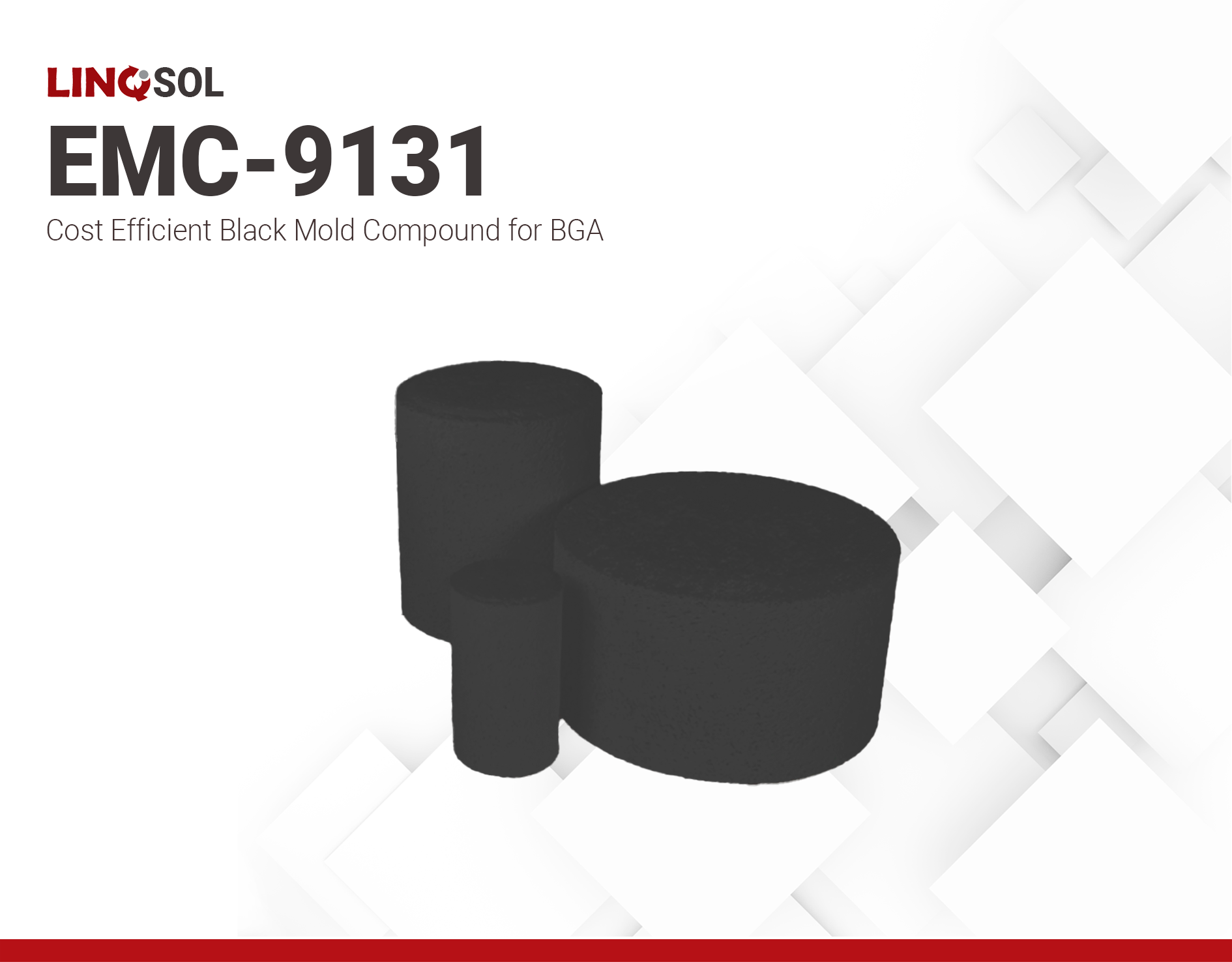LINQSOL EMC-9131 | Black Epoxy Mold Compound
Harmonization Code : 3907.30.00.90 | Polyacetals, other polyethers and epoxide resins, in primary forms; polycarbonates, alkyd resins, polyallyl esters and other polyesters, in primary forms : Epoxide resins : Other
Main features
- High Spiral flow
- Designed for SOT and Modules
- Low stress and Low Moisture Absorption
Product Description
LINQSOL EMC-9131 is a high-performance, eco-friendly epoxy molding compound engineered specifically for BGA and CSP encapsulation. Designed to minimize warpage, EMC-9131 features an ultra-low modulus and optimized linear shrinkage, ensuring reliable package integrity.
LINQSOL EMC-9131 its exceptional fluidity reduces wire sweep, even for fine-pitch packages and ultra-thin bonding wires. EMC-9131 also demonstrates outstanding adhesion to both PCB substrates and silicone chips, performing reliably in rigorous tests up to MSL2 @260°C. This versatile compound is compatible with a range of BGA, CSP, and QFN package types, including PBGA, LGA, FBGA, CABGA, CTBGA, FCBGA, FC-CSP, QFN, DFN, and more.
Technical Specifications
| General Properties | |||||||
| Color Color The color | Black | ||||||
| Filler Content | 89 % | ||||||
| Specific Gravity Specific Gravity Specific gravity (SG) is the ratio of the density of a substance to the density of a reference substance; equivalently, it is the ratio of the mass of a substance to the mass of a reference substance for the same given volume. For liquids, the reference substance is almost always water (1), while for gases, it is air (1.18) at room temperature. Specific gravity is unitless. | 2.01 | ||||||
| Thermal Properties | |||||||
| Glass Transition Temperature (Tg) Glass Transition Temperature (Tg) The glass transition temperature for organic adhesives is a temperature region where the polymers change from glassy and brittle to soft and rubbery. Increasing the temperature further continues the softening process as the viscosity drops too. Temperatures between the glass transition temperature and below the decomposition point of the adhesive are the best region for bonding. The glass-transition temperature Tg of a material characterizes the range of temperatures over which this glass transition occurs. | 130 °C | ||||||
| UL 94 Rating UL 94 Rating Flammability rating classification. It determines how fast a material burns or extinguishes once it is ignited. HB: slow burning on a horizontal specimen; burning rate less than 76 mm/min for thickness less than 3 mm or burning stops before 100 mm V-2: burning stops within 30 seconds on a vertical specimen; drips of flaming particles are allowed. V-1: burning stops within 30 seconds on a vertical specimen; drips of particles allowed as long as they are not inflamed. V-0: burning stops within 10 seconds on a vertical specimen; drips of particles allowed as long as they are not inflamed. 5VB: burning stops within 60 seconds on a vertical specimen; no drips allowed; plaque specimens may develop a hole. 5VA: burning stops within 60 seconds on a vertical specimen; no drips allowed; plaque specimens may not develop a hole | V-0 | ||||||
| |||||||
| |||||||
| Mechanical Properties | |||||||
| |||||||
| |||||||
| |||||||
| Chemical Properties | |||||||
| Moisture absorption | 0.15 % | ||||||
| |||||||
| Physical Properties | |||||||
| Spiral Flow @ 175°C | 55 cm | ||||||






